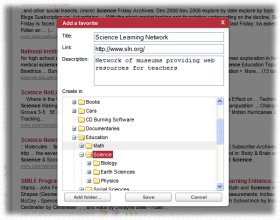|
Education
Web
Viewing 1-2 of 2 total results
etc.). • Using absolute and relative location to identifying major mountain ranges, major rivers, and major climate and vegetation zones. • Constructing and reading a variety of effective representa- tions of the earth such as maps, globes, and photographs (e.g., physical, politi...
1
0
etc.). • Using absolute and relative location to identifying major mountain ranges, major rivers, and major climate and vegetation zones. • Constructing and reading a variety of effective representa- tions of the earth such as maps, globes, and photographs (e.g., physical, political, topographic, computer generated, and special purpose maps). i • Identifying and using basic elements of a map. • Using grid systems to locate places on maps and globes (e.g., longitude and latitude
29
0
http://education.vermont.gov/new/pdfdoc/pubs/grade_expectations/history_social_sciences.pdf#page=29
education.vermont.gov/new/pdfdoc/pubs/grade_expectations/history_social_s...
• Using absolute and relative location to identifying major mountain ranges, major rivers, and major climate and vegetation zones. • Constructing and reading a variety of effective representa- tions of the earth such as <span class="highlight">maps</span>, globes, and photographs (e.g., physical, political, <span class="highlight">topographic</span>, computer generated, and special purpose <span class="highlight">maps</span>). i • Identifying and using basic elements of a map. • Using grid systems to locate places on <span class="highlight">maps</span> and globes (e.g., longitude and latitude). • Using appropriate
30
0
http://education.vermont.gov/new/pdfdoc/pubs/grade_expectations/history_social_sciences.pdf#page=30
education.vermont.gov/new/pdfdoc/pubs/grade_expectations/history_social_s...
etc.). • Using absolute and relative location to identifying major mountain ranges, major rivers, and major climate and vegetation zones. • Constructing and reading a variety of effective representa- tions of the earth such as <span class="highlight">maps</span>, globes, and photographs (e.g., physical, political, <span class="highlight">topographic</span>, computer generated, and special purpose <span class="highlight">maps</span>). i • Identifying and using basic elements of a map. • Using grid systems to locate places on <span class="highlight">maps</span> and globes (e.g., longitude and latitude
Vermont ecosystem and tracing its succession before and after a damaging event, showing how the eco- system has been restored through the maintenance of at- mosphere quality, generation of soils, control of the water cycle, disposal of wastes and recycling of nutrients (e.g., flooding, former...
1
0
Vermont ecosystem and tracing its succession before and after a damaging event, showing how the eco- system has been restored through the maintenance of at- mosphere quality, generation of soils, control of the water cycle, disposal of wastes and recycling of nutrients (e.g., flooding, former mining sites, glacial impact, deforesta- tion, recovery of rivers from sewage/chemical dumping, burning of fossil fuels). AND • Explaining a natural chemical cycle that has been dis- rupted by human activity and
122
0
http://education.vermont.gov/new/pdfdoc/pubs/grade_expectations/science.pdf#page=122
education.vermont.gov/new/pdfdoc/pubs/grade_expectations/science.pdf#page...
Vermont ecosystem and <span class="highlight">tracing</span> its succession before and after a damaging event, showing how the eco- system has been restored through the maintenance of at- mosphere quality, generation of soils, control of the water cycle, disposal of wastes and recycling of nutrients (e.g., flooding, former mining sites, glacial impact, deforesta- tion, recovery of rivers from sewage/chemical dumping, burning of fossil fuels). AND • Explaining a natural chemical cycle that has been dis- rupted by human activity and
|
